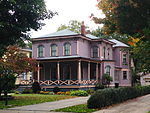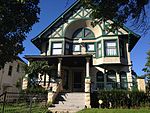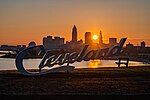Cleveland Metroparks Zoo

The Cleveland Metroparks Zoo aka Cleveland Zoological Park is a 183-acre (74 ha) zoo in Cleveland, Ohio. The Zoo is divided into several areas: Australian Adventure; African Savanna; Northern Wilderness Trek, The Primate, Cat & Aquatics Building, Waterfowl Lake, The RainForest, and the newly added Asian Highlands. Cleveland Metroparks Zoo has one of the largest collections of primates in North America, The Zoo is a part of the Cleveland Metroparks system. The Cleveland Metroparks Zoo was founded in 1882. It is one of the most popular year-round attractions in Northeast Ohio by attendance with a 2% increase from the previous year to 1.2 million visitors in 2007, compared to the Cleveland Indians who were the most popular attraction in Northeast Ohio in 2007 with a total attendance of over 2.2 million.
Excerpt from the Wikipedia article Cleveland Metroparks Zoo (License: CC BY-SA 3.0, Authors, Images).Cleveland Metroparks Zoo
Wildlife Way, Cleveland
Geographical coordinates (GPS) Address External links Nearby Places Show on map
Geographical coordinates (GPS)
| Latitude | Longitude |
|---|---|
| N 41.447 ° | E -81.712 ° |
Address
Cleveland Metroparks Zoo
Wildlife Way 3900
44109 Cleveland
Ohio, United States
Open on Google Maps










